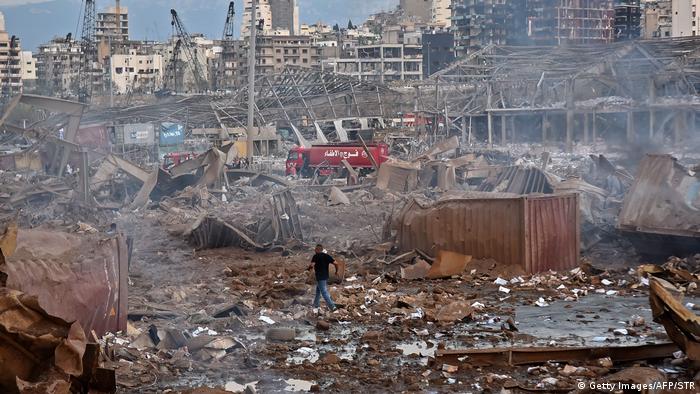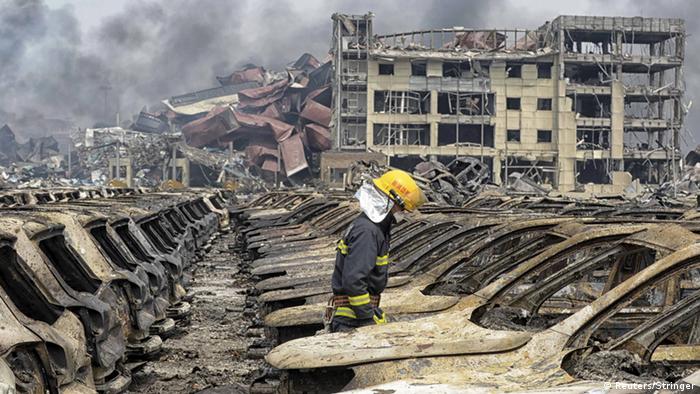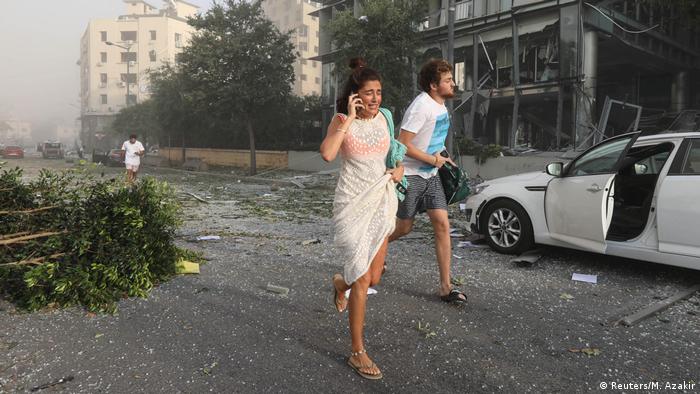CHEMISTRY 101
Beirut deadly blast: What makes ammonium nitrate so dangerous?
The huge explosion that rocked the Lebanese capital on Tuesday is thought to have been caused by ammonium nitrate. The chemical is often used as fertilizer — and in explosives.

Lebanese Prime Minister Hassan Diab says he believes Tuesday's explosion in Beirut could have been caused by large quantities of ammonium nitrate stored in the port.
The ammonium nitrate in question was said to have been brought to the Lebanese capital on a freight ship that was impounded for safety reasons in 2013. It had been en route from Georgia to Mozambique.
Diab said some 2,750 metric tons (3,025 US tons) of the highly explosive chemical had been stored at the port since then without necessary safety precautions in place.
The blast was so powerful it could be heard in Cyprus, some 200 kilometers (124 miles) further to the west, media reports said.
What is ammonium nitrate?
Ammonium nitrate is a white crystalline salt that can be fairly cheaply produced from ammonia and nitric acid. It is soluble and often used as fertilizer, as nitrogen is needed for healthy plant development.

The port was completely destroyed by the explosion
Ammonium nitrate in its pure form is not dangerous. It is, however, heat sensitive. At 32.2 degrees Celsius (89.96 degrees Fahrenheit), ammonium nitrate changes its atomic structure, which in turn changes its chemical properties.
When large quantities of ammonium nitrate are stored in one place, heat is generated. If the amount is sufficiently vast, it can cause the chemical to ignite. Once a temperature of 170 C is reached, ammonium nitrate starts breaking down, emitting nitrous oxide, better known as laughing gas. Any sudden ignition causes ammonium nitrate to decompose directly into water, nitrogen and oxygen, which explains the enormous explosive power of the salt.
Deadly disasters
As ammonium nitrate is a highly explosive chemical, many countries strictly regulate its use. Over the past 100 years, there have been several disasters involving the chemical.
In 1921, for example, a massive blast occurred at a BASF chemical plant in Ludwigshafen in the German state of Rhineland-Palatinate. About 400 metric tons of a mixture of ammonium sulfate and ammonium nitrate exploded, killing 559 people and injuring 1,977. The plant was largely destroyed in the blast, which could be heard as far away as Munich, some 300 kilometers distant.

The 2015 explosion in Tianjin caused widespread destruction in the city
In 2015, explosions caused by ammonium nitrate ripped through the Chinese port city of Tianjin. Eight hundred metric tons of the chemical were said to have been stored along with other substances in a warehouse for hazardous materials. The blasts killed 173 people and destroyed an entire city district.
Two years earlier, in 2013, an ammonium nitrate explosion occurred at the West Fertilizer Company site in the US state of Texas, killing 14 people. And in 2001, 31 people died in Toulouse, France, in an explosion caused by the chemical.
Terrorist favorite
In Germany, the purchase and use of ammonium nitrate is regulated by the explosives act. This is because the cheap, highly explosive and relatively easily obtainable material has in the past been used by terrorists to carry out attacks.
For example, in 1995, US conspiracy theorist and gun enthusiast Timothy McVeigh used a mixture of ammonium nitrate and other substances to bomb the Alfred P. Murrah Federal Building in Oklahoma City. Norwegian far-right extremist Anders Behring Breivik also used

No comments:
Post a Comment